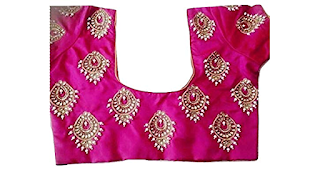Fashion Industry Key Sectors: A Closer Look at the Backbone of Fashion
Introduction
The fashion industry is a dynamic and ever-evolving sector that has a significant impact on our lives. It not only influences our sense of style but also drives economic growth worldwide. In this article, we will delve into the key sectors of the fashion industry, exploring the different aspects that make it such a vibrant and essential part of our society.
The Designers: Creative Minds Behind Fashion Trends
Designers are the true trailblazers of the fashion industry. These creative individuals possess an innate ability to conceptualize unique and innovative designs that captivate the world. They set the trends and push the boundaries of fashion, constantly reinventing and reimagining the way we dress.
Their expertise lies in understanding and predicting the ever-changing demands of consumers, ensuring that their designs are not only visually appealing but also commercially viable. From haute couture to ready-to-wear collections, designers play a pivotal role in shaping the fashion landscape.
Manufacturers: Transforming Ideas into Reality
Once the designs are finalized, it is up to the manufacturers to bring them to life. These key players in the fashion industry specialize in transforming raw materials into finished garments. They possess the technical expertise required to handle various production processes, including cutting, stitching, and finishing.
Manufacturers ensure that the designs translate seamlessly from concept to reality, paying meticulous attention to detail to create high-quality garments. They work closely with designers to understand their vision and overcome any manufacturing challenges that may arise, ultimately delivering products that meet the highest standards of craftsmanship.
Retailers: Connecting Fashion with Consumers
Retailers are the bridge between fashion and the consumers. They play a vital role in the fashion industry by curating collections that cater to the diverse tastes and preferences of their target audience. Whether it's a high-end luxury boutique or a fast-fashion retailer, they create a shopping experience that is both satisfying and accessible.
Retailers are responsible for sourcing and merchandising fashion items, ensuring that they align with the latest trends and meet consumer demands. They employ visual merchandising techniques to create captivating displays that entice customers to explore and purchase their products.
Marketing and Public Relations: Spreading the Fashion Gospel
In today's digital age, marketing and public relations have become integral to the success of any fashion brand. This sector is responsible for creating captivating campaigns that effectively communicate a brand's values and aesthetics to the target audience.
From social media influencers to fashion shows, marketing and PR professionals strategically leverage different channels to generate buzz and create brand awareness. They collaborate with designers, manufacturers, and retailers to create a cohesive narrative that resonates with consumers, driving sales and brand loyalty.
The Role of Technology: Revolutionizing the Fashion Industry
Technology has revolutionized every aspect of our lives, and the fashion industry is no exception. It has transformed traditional manufacturing processes, making them faster, more efficient, and eco-friendly. From 3D printing to digitized pattern making, technology has enabled fashion designers and manufacturers to push the boundaries of creativity and sustainability.
Additionally, e-commerce platforms and virtual reality have revolutionized the way consumers shop for fashion. Online retailers provide convenience and accessibility, allowing customers to explore and purchase products from the comfort of their homes. Virtual reality, on the other hand, offers a unique and immersive shopping experience, bringing the excitement of a physical store to the digital realm.
Conclusion
The fashion industry is a multifaceted world that thrives on collaboration and creativity. From designers to manufacturers, retailers to marketers, each sector plays a vital role in shaping the trends we follow and the clothes we wear. With technology continually pushing the boundaries, the fashion industry is bound to evolve even further, offering endless possibilities for both consumers and industry professionals.
.jpg)


Comments
Post a Comment